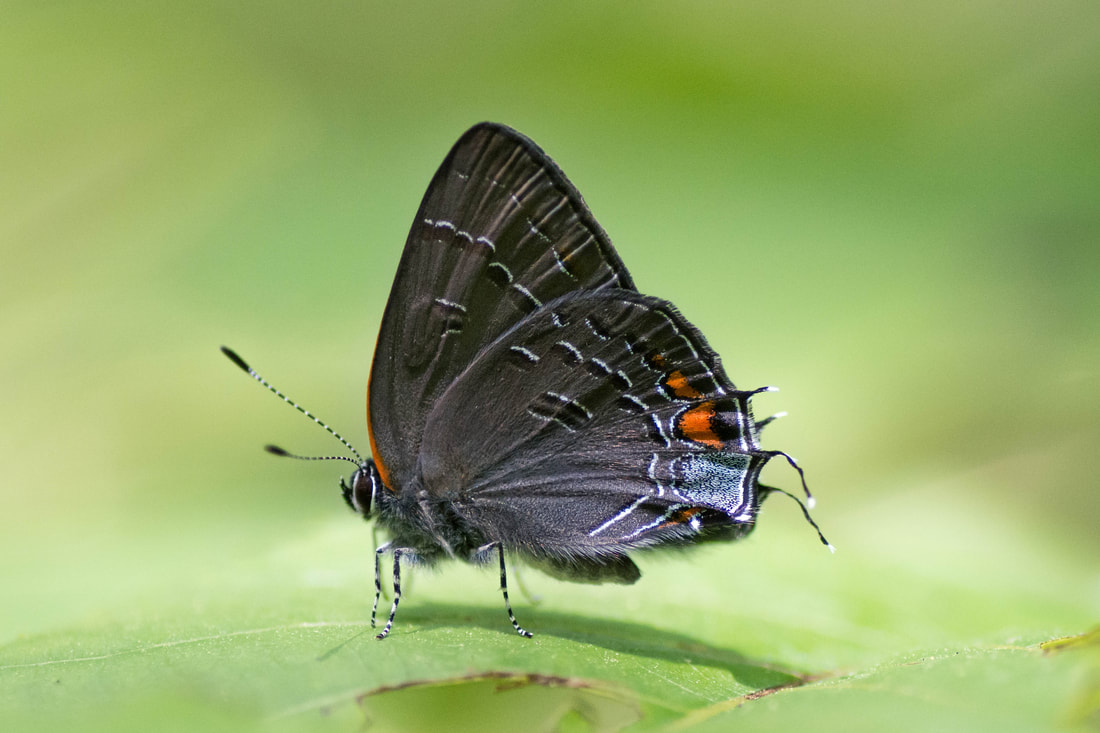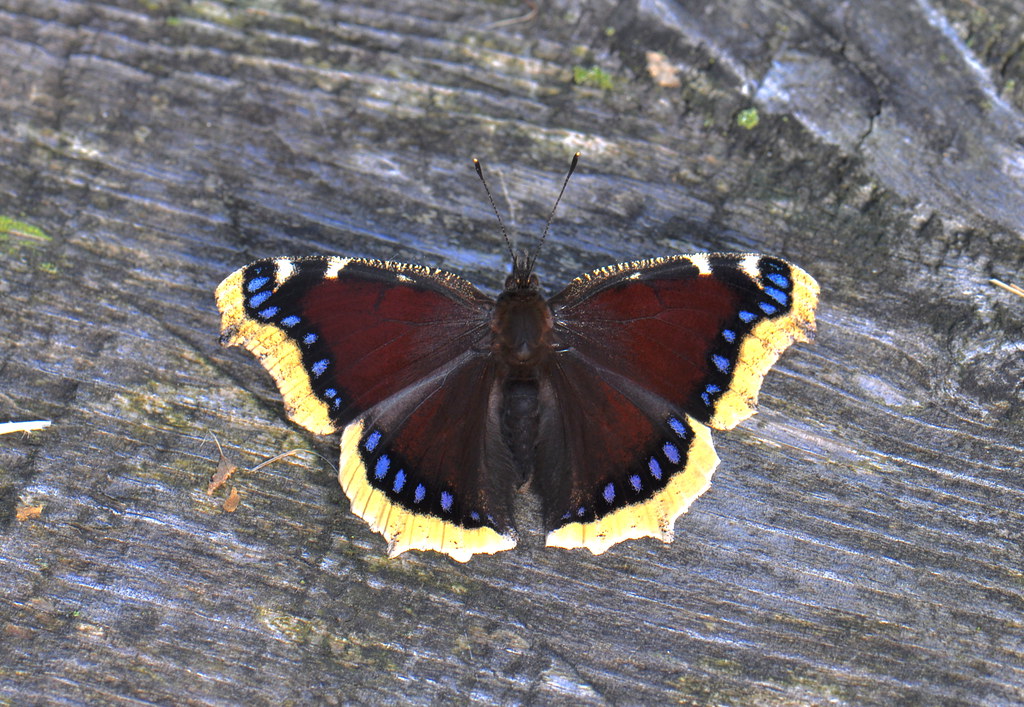"Are our yards becoming a source or a sink for butterflies?" Monarchs migrate to warmer climates in the winter but have you ever wondered what other species of butterflies do?There are many species of butterflies and moths that endure the winter in their native range. Did you know that the luna moth, wooly bear, fritillary and red-banded hairstreak all overwinter in fall leaves? In fact, many of these butterflies and moths are disguised as dry leaves inside their chrysalides and cocoons. According to a study by NASA, "turf grasses, occupying about 2% of the surface of the continental U.S., are the single largest irrigated crop in the country." This study concludes that lawns can act as a carbon sequestering system. However, the hidden cost of using Nitrogen fertilizers, water and lawn mowers offsets any positive environmental benefits of maintaining a lawn. On the positive side, this insight provides gardeners and homeowners a huge opportunity to support wildlife in their own backyard! List of Butterflies that Overwinter in Fall Leaves
You can have your lawn and insect habitat too!You can designate an area of your yard to perennial forbs and grasses which will provide great cover for bugs in the winter while still having a great-looking lawn. In addition, you don't have to leave your entire yard messy in order to provide a lovely insect habitat. Leaving a pile of sticks or plant material here and there can make a world of difference! These piles can also act as mulch around your trees, shrubs, and perennial plants. The best part about it? Leaves act as free mulch and compost! Reduce your perennial pruning by a few inchesMany nurseries suggest cutting your perennials back to "basal growth" which means that you will leave only a few inches of above-ground growth. However, you can provide more protection for bugs by leaving 6-8 inches of growth. Build a bug sanctuary that supports wildlifeIf you are planning to build a bee hotel, insect abode, or butterfly barn (the list goes on), it can be as simple or elaborate as you like. Simply drilling holes in a log or bundling bamboo behind a mesh screen will do! The idea behind these structures is that it will provide protection from the elements and predators throughout the winter. In the wild, insects will seek out little cracks, holes and crevices to lay their eggs and nestle into for the winter. For plenty of inspiration for bee and butterfly housing click here. Check your firewood for chrysalides and cocoons before burningSeveral moths and caterpillars will overwinter underneath the bark of logs. If you see a cocoon, leave it be! Plant perennials that bloom in the spring and fallWhen butterflies emerge from their chrysalides in early spring, they are hungry for nectar sources. The same goes for butterflies that overwinter in their northern range and need fall nectar sources. Spread the word to your neighbors and fellow gardners!Placing signs in your yard such as the one above will notify passersby that you are supporting the pollinators. A well-kept lawn can be a thing of beauty and has represented a status symbol throughout the years. However, more and more people are converting their lawns to gardens and wildlife habitats. The Xerces society has come up with a wonderful campaign called #LeavetheLeaves in which you can share with your friends on social media. Sources and Additional ReadingHow to Create an Insect Habitat in Your Garden. https://www.smithsonianmag.com/smithsonian-institution/creating-insect-habitat-ripley-garden-180961898/
Leaves the Leaves. https://xerces.org/blog/leave-the-leaves Milesi, C., Elvidge, C. D., Dietz, J. B., Tuttle, B. T., Nemani, R. R., & Running, S. W. (2005). A strategy for mapping and modeling the ecological effects of US lawns. J. Turfgrass Manage, 1(1), 83-97. Chicago Summers, Carolyn. Designing Gardens with Flora of the American. East Paperback. March 4, 2010. 90+ Free Bee and Insect Housing Images. https://pixabay.com/images/search/bee%20house/
4 Comments
|
AuthorRebecca Chandler Archives
March 2024
Categories |










 RSS Feed
RSS Feed